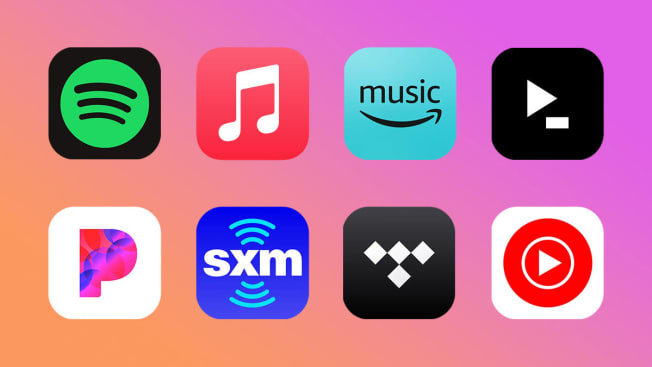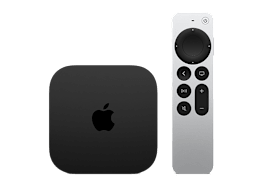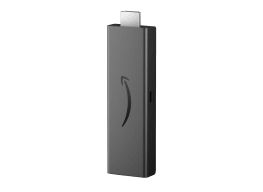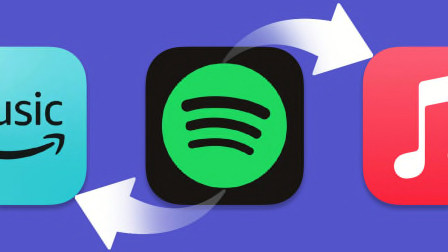Best Music Streaming Services
How to choose among Apple Music, Spotify, Pandora, Tidal, and more
When you shop through retailer links on our site, we may earn affiliate commissions. 100% of the fees we collect are used to support our nonprofit mission. Learn more.

The best music streaming services have a lot in common: similar song libraries, familiar features, and a price of around $10 a month. Most have an unpaid trial period, and many even offer a free music streaming tier.
You can thank market competition for the similarities. Music streaming is one of the few corners of the tech industry where a number of companies have a decent shot at attracting the same customers. That forces them to add features, match rivals’ perks, and keep prices low to hold on to subscribers. Listeners get to enjoy the benefits of services that just keep getting better without having to worry about big price increases.
Amazon Music Unlimited and Amazon Prime Music
Price: Prime Music is included free with Amazon Prime, Amazon’s paid subscription service that costs $15 per month or $139 per year. It has a library of 2 million songs.
Amazon Music Unlimited, with a far bigger library of songs and more features, costs $9 per month for Prime members (or $89 for an annual subscription). It’s $10 per month for non-Prime members. There’s a free three-month trial and a discounted family plan. You can get a special $5 rate if you sign up for the Single Device Plan via an eligible Amazon Echo device.
Anyone can access free, ad-supported playlists and stations by asking Amazon’s Alexa digital assistant to play music.
Who it’s best for: Amazon Prime Music doesn’t cost anything beyond your regular Amazon Prime membership, so the appeal is obvious. Meanwhile, Amazon Music Unlimited is a good bet for Prime members looking for a bargain. The deal isn’t as sweet as it used to be, but a lot of other services cost 99 cents more. And this is a solid option for streaming high-quality files.
Pros: Both are ad-free, on-demand services, and if you already have a Prime subscription, Amazon Music Unlimited is the best deal you can get for a really robust collection of content (though not by much). Unlimited has more than 90 million songs, curated playlists, podcasts, and personalized stations. That entire library can now be streamed in high definition, and over 7 million tracks are available in 24-bit Ultra HD. The service also has a large and growing library of spatial audio content mastered in Dolby Atmos and 360 Reality Audio.
Cons: Amazon Music Unlimited doesn’t seem to be quite as effective in making recommendations as many competitors, Spotify in particular. And while Prime members don’t have to pay extra for the basic tier of Prime Music, its 2 million songs amount to a thin selection compared with what you get from other streaming services.
Apple Music
Price: Individuals pay $10 per month; for families of up to six, the service costs $15. Apple Music also has a discounted rate of $5 for students. There’s no free tier, but you can get a one-month free trial or six months free if you’ve bought eligible AirPods, HomePod smart speakers, or Beats headphones.
You can use Siri to control Apple Music with a regular plan, but there’s also a cheaper “voice plan” for $5 per month. That lets you access any song or playlist using your voice—and only your voice. You don’t get to use the app any other way.
Who it’s best for: People who already have large iTunes libraries or who are otherwise committed to the Apple ecosystem.
Pros: Apple Music has a library of 90 million songs that can be accessed on Apple, Windows, and Android devices. After a recent update, the entire library is available in lossless hi-fi at no extra charge. Human curators create a variety of themed playlists that help users discover new music. Unsurprisingly, the Apple Music experience is particularly smooth on iPhones and Mac computers.
Apple will launch a classical music streaming service March 28 at no extra charge for Apple Music subscribers. The new service is based on Primephonic, a popular classical music streaming service that Apple bought recently. The reason for the new service is that classical music doesn’t play well with a lot of music apps because the track titles and "artist" listings are formatted differently from most pop music. The new service will allow a listener to search for a particular version of Mahler’s Fourth Symphony by the name of the composer, the conductor, the orchestra, or the soloist, as well as pin it down by the catalog number. For the moment, Apple Classical only has an app for iPhone, though it does support AirPlay 2, which would allow streaming from an iPhone to other Apple devices.
Cons: The desktop app for Windows computers is a little clunky. But you can listen to Apple Music in a browser for a more streamlined experience.
Idagio
Price: Idagio is a classical music streaming service that costs around $10 per month (the subscription is billed in euros, so there might be minor currency fluctuations). Idagio also has a free ad-supported tier with 2 million songs, and students can get 50 percent off. There’s a free two-week trial period, so you can try the service before you commit.
For $30 per month, you get access to Idagio’s exclusive online concerts, which sometimes feature leading performers. (There’s also a substantial discount for an annual membership.)
If you want the high definition of Idagio’s Premium+ tier, you can save about $3 a month by signing up via a web browser instead of through an app store.
Who it’s best for: Fans of classical music and those who want to explore the genre.
Pros: Idagio is built to suit the idiosyncrasies of the classical world. It can be hard to find your favorite recording of a beloved Rachmaninoff concerto on more mainstream services because of the complicated way tracks have to be named. On Idagio, the search tools handle the naming conventions of classical tracks with ease. You can also expect to find a bigger classical selection here.
Idagio has a number of browsing tools, such as curated playlists and the option to sort by instruments. Streaming high-quality audio files is another perk that may be free, depending on how you subscribe (see above).
Cons: Idagio doesn’t have any other genres, but for now, it’s is the best choice for classical music purists. If you enjoy listening to nonclassical content, too, you might check out Apple Music’s new Classical service, which has many of the same search features with bonus access to Apple Music’s huge jazz and pop library.
Pandora
Price: Pandora was designed for those who want tailored recommendations and the kind of hands-off listening experience you get with a live radio station. Pricing is slightly confusing. The streaming radio feature is free, but there are ads and a few limitations. For $5 per month, you get the option to pick which songs you listen to without ads, plus you get streaming radio ad-free.
The $10-per-month tier gets you access to the entire service ad-free. A $15 family plan is also available. Pandora offers free trial periods for the paid plans and discounts for students and members of the military. Subscribers also get some perks from Pandora’s parent company, SiriusXM.
Who it’s best for: Pandora was a music streaming pioneer, but today it doesn’t have a ton that sets it apart. However, the cheaper tier is a good choice for people who want a discount—especially the radio feature. You don’t need to scroll through lists of songs or do a lot of searches—you just sit back and listen to what the service picks for you.
Pros: It’s easy to get started. Tell Pandora which artist you want to hear and it creates a channel with selections from that artist and others with similar styles. You can tweak the channel to match your tastes.
Pandora was purchased by SiriusXM in 2019. The service’s subscribers get access to some SiriusXM content and vice versa. See the help page for details.
Cons: Pandora’s maximum audio quality isn’t as high as that of some competitors. The company doesn’t advertise how many songs are in its library, which suggests that its offerings may be more limited than those of leading competitors.
SiriusXM
Price: The packages SiriusXM offers are constantly changing, but the basic details tend to be about the same. For around $14 a month you can get a subscription that lets you listen on your phone, with access to hundreds of channels, including music, comedy, sports, talk radio, on-demand shows, and ad-free music with skippable tracks. Sometimes that price includes access to the Howard Stern channels (his new content is a SiriusXM exclusive), but sometimes you need to upgrade to the $24-a-month Premium tier.
There’s an extra charge if you want to stream directly to a car radio via satellite (though you could just get the app and use Bluetooth if you have good cell service). That option costs $19 per month.
Sirius offers free trials, discounted rates for the first year, and family plans. Haggling with a customer service rep may be the way to get the best price. Just make sure you don’t get roped into a plan with hidden fees and shifting costs. And be advised that the last time we tried canceling, it was an enormous hassle.
Who it’s best for: People who like terrestrial radio stations but want more options and a commercial-free experience with the option of skipping tracks. SiriusXM is also the only game in town for Howard Stern fans who want access to his latest content.
Pros: SiriusXM has a wide variety of offerings focused on individual genres or even artists, which might be a significant upgrade over your local radio stations. And if you have good cell service on your commute, streaming from your phone will get you cheaper access to the same content offered in the company’s satellite radio packages.
As described above, SiriusXM purchased Pandora, and the two services now share some features and content free of charge. See Pandora’s help page for details.
Cons: You’ll probably have to call customer service to end your subscription, which was a convoluted, time-consuming process when we tried it. Choosing a package is also surprisingly complicated. When you factor in the satellite radio tiers, new users need to pick from numerous subscription choices with a confusing variety of offerings, optional add-ons, and hidden fees. The packages change constantly and details are hard to find, so it’s difficult to know for sure whether you’re getting the best deal. The SiriusXM app and web interface can also be trickier to navigate than those of most competitors.
Spotify
Price: Users can stream music free with ads via desktop and web apps. The Premium tier costs $10 per month for individuals, $13 for two people, or $16 for up to six users. It grants ad-free on-demand access to Spotify’s library of 80 million tracks and 4 million podcast titles. Students pay a discounted rate of $5 and get free access to Hulu (with commercials) and Showtime. A 30-day trial period is available.
Who it’s best for: People who want to hear plenty of music on a variety of devices. The free tier is also one of the better options for users who don’t mind ads and want to listen to songs on demand. Spotify is known for its effective recommendation algorithm.
Spotify has doubled down on podcasts as well. The service is host to a variety of exclusive content, particularly in the realm of podcasts.
Pros: Spotify combines a large library of popular songs with a series of robust playlists. These playlists are often geared toward specific activities and genres, helping people find music for specific situations, such as the gym or long car trips. Podcasts and other original programming are also available. If you’re a student who also wants a TV streaming service, bundling with Hulu for as little as $2 a month could save you money.
Cons: On a smartphone, users can stream playlists and stations free with ads, but on-demand song selection is limited to a small number of tracks, and you can skip only a certain number of songs per hour. You can’t connect Spotify directly from the Apple HomePod, though you can connect your phone to the smart speaker over Bluetooth and play Spotify that way.
The company has announced a radical change to its user interface, with the grid of albums giving way to a TikTok like feed in which listeners can preview music and videos. The new format will encourage "deeper discovery and more meaningful connections" for users, Spotify says. Many users are less than happy with the shift and have been clamoring for a way to keep the status quo.
Last year, after a controversy surrounding misinformation, some artists, including Neil Young and Joni Mitchell, pulled their music from Spotify.
There’s still no high-quality audio on the service, despite the company making an announcement about it in 2021. In a March 2023 interview, Spotify co-president Gustav Söderström told The Verge that Spotify HiFi “is still coming” but declined to give details about when.
Tidal
Price: Tidal starts at $10 per month for hi-res audio quality; $20 per month unlocks even higher fidelity “master quality” audio. Discounted plans for families, students, and members of the military are available. The service offers a free, ad-supported tier with lower audio quality, and a one-month trial of its paid services. The company says it has 90 million tracks and 450,000 videos.
Who it’s best for: Music lovers who want high-quality audio (including high-res audio) and offline listening.
Pros: Tidal offers both CD-quality and high-res audio (via HiFi Plus, its top-tier service). It also has a substantial library of spatial audio tracks in both Dolby Atmos and Sony 360 Reality Audio formats. Tidal offers hi-res streaming with Tidal Connect, which allows you to bypass the Bluetooth connection from your phone and stream directly to compatible speakers, soundbars, and other home audio devices.
Tidal pays artists significantly more than most other streaming services, with some estimates suggesting that the platform offers almost four times as much per stream as Spotify.
Cons: The cost of $20 per month is steep, especially when lossless streaming doesn’t cost extra with the Amazon and Apple services. What’s more, you might not be able to hear the difference with the high-quality files if you don’t have excellent audio equipment. And even if you think high-quality audio files are worth the price of admission, it’s important to remember that these large files can use up limited cellular data plans pretty quickly if you’re listening on a phone.
YouTube Music
Price: YouTube Music is free with ads. YouTube Music Premium, which is ad-free, costs $10 per month for an individual or $15 per month for families. A free one-month trial is available. Discounts are available for students. People with a Google smart speaker can access free ad-supported playlists and stations without signing up by asking their device to play music.
Adding some potential confusion, there’s a separate service called YouTube Premium, which costs $12 per month (or more for a family plan). It includes the same music streaming service plus ad-free videos and some original video content.
Who it’s best for: If you have a collection of your own audio files, YouTube Music has a useful free feature. It’s the best option for anyone who wants to upload a personal library and listen to it on the go without paying a fee. YouTube Music is also one of the few free options for listening to specific songs on demand.
Pros: What sets YouTube Music apart is the ability to upload up to 100,000 of your own audio files to stream from the cloud. You don’t have to pay anything to use this feature.
YouTube Music Premium gives you access to a library of 70 million songs, personalized playlists, and music videos. Location-based playlists will even suggest songs—think high-tempo music at the gym—at appropriate times.
Cons: There’s a major flaw to the free tier of YouTube Music. Unless you’re listening to tracks you uploaded yourself, you can’t lock your phone or switch to another app without the music stopping.
How to Listen
Whichever service you choose, you’ll have a better time with your music if you play it on equipment that sounds great. Here are a few of the best-rated headphones and speakers from CR’s ratings.
































